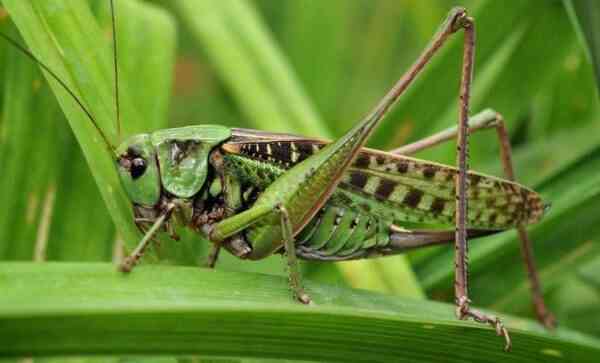Small and nimble grasshoppers are undoubtedly familiar to everyone who is out of town at least from time to time. These nimble insects are able to move in giant leaps, especially considering their modest size. However, there are larger varieties among them, and they differ quite significantly. Considering how many there are in the world, it is quite possible that there are still undiscovered species that elude researchers.
Interesting facts about grasshoppers
- Their legs are composed of four segments. Most terrestrial mammals, for example, out of three – thigh, lower leg, foot.
- In total, there are about 6800 species of grasshoppers in the world.
- Grasshoppers can chirp so loudly thanks to a special organ, which usually located in hard elytra.
- Some species of grasshoppers are capable of flight. This is how swarms of locusts move, devouring all the vegetation in their path. But most of them can only jump.
- Most grasshoppers are omnivores, but there are also pure predators among them.
- These insects live on all continents except Antarctica (interesting facts about insects).
- In most of their species, the length of sensitive whiskers exceeds the length of the body.
- On average, grasshoppers live for about 15 days. That’s such a short lifespan.
- Their life cycle begins with the larva stage, and it lasts quite a long time. As they grow, the larvae usually molt 5-6 times, and then become grasshoppers.
- These larvae have one feature: they develop underground, and they need to get to the surface in order to survive. They feel the direction to fresh air, but they are not able to turn, therefore, if a tree root or, for example, a stone, falls on the way of the larva to freedom, it will die. As a result, only about 10% of grasshopper larvae reach the surface.
- Sudanese grasshopper larvae are almost indistinguishable from ants living in these parts. This helps them to successfully disguise themselves in an ant society and live with them by eating their food (interesting facts about ants).
- Grasshoppers can cover a distance of 15-20 times their body length in one jump.
- African Grasshoppers can spit their own blood at an enemy to take advantage of their confusion.
- These insects have adapted to a variety of habitats. They are found in the humid jungle, and in the impenetrable taiga, and in the harsh tundra, and in the lifeless deserts.
- Locusts related to grasshoppers sometimes stray into flocks numbering several billion individuals. Such a flock could cause great damage to the agriculture of an entire region.
